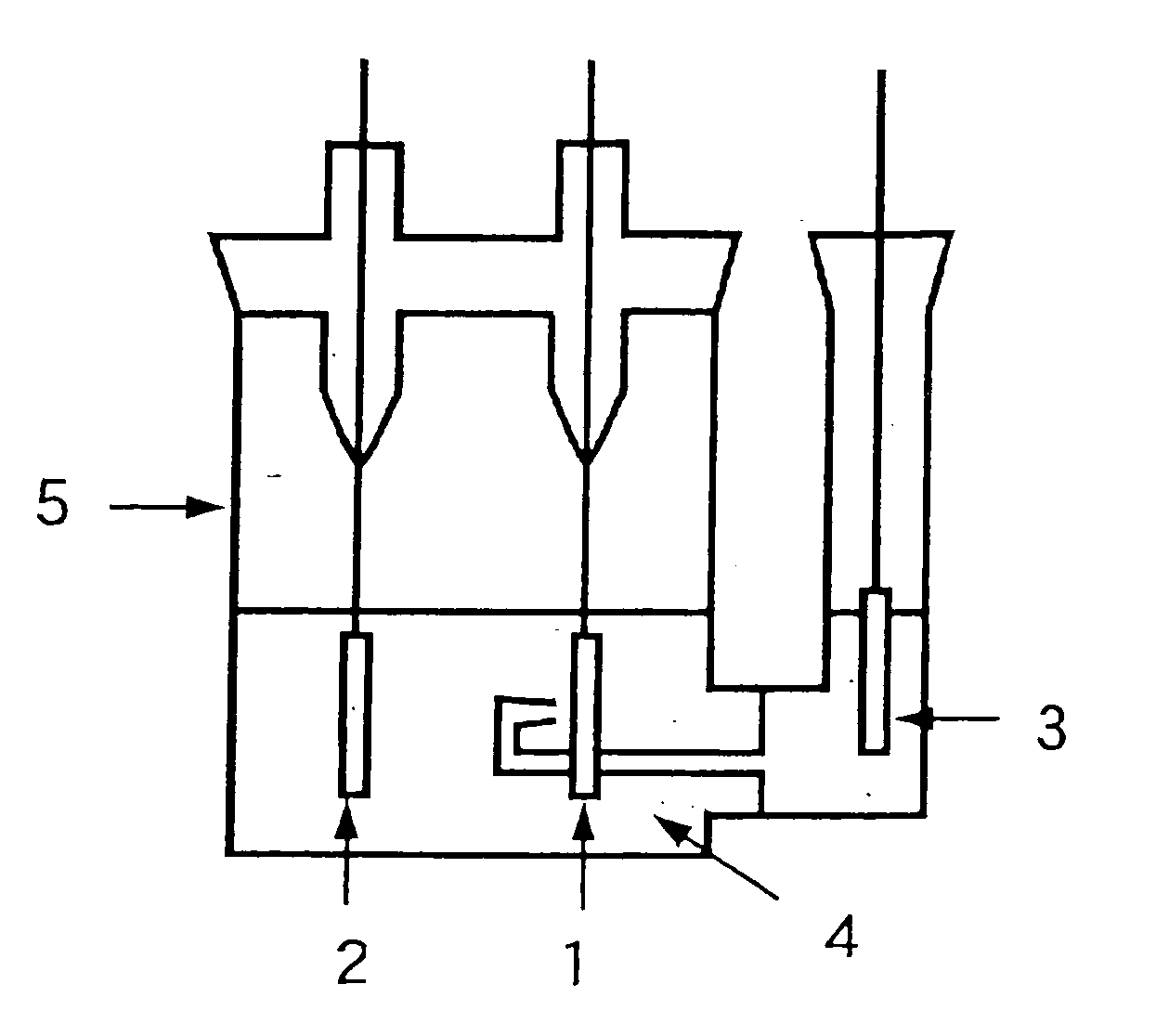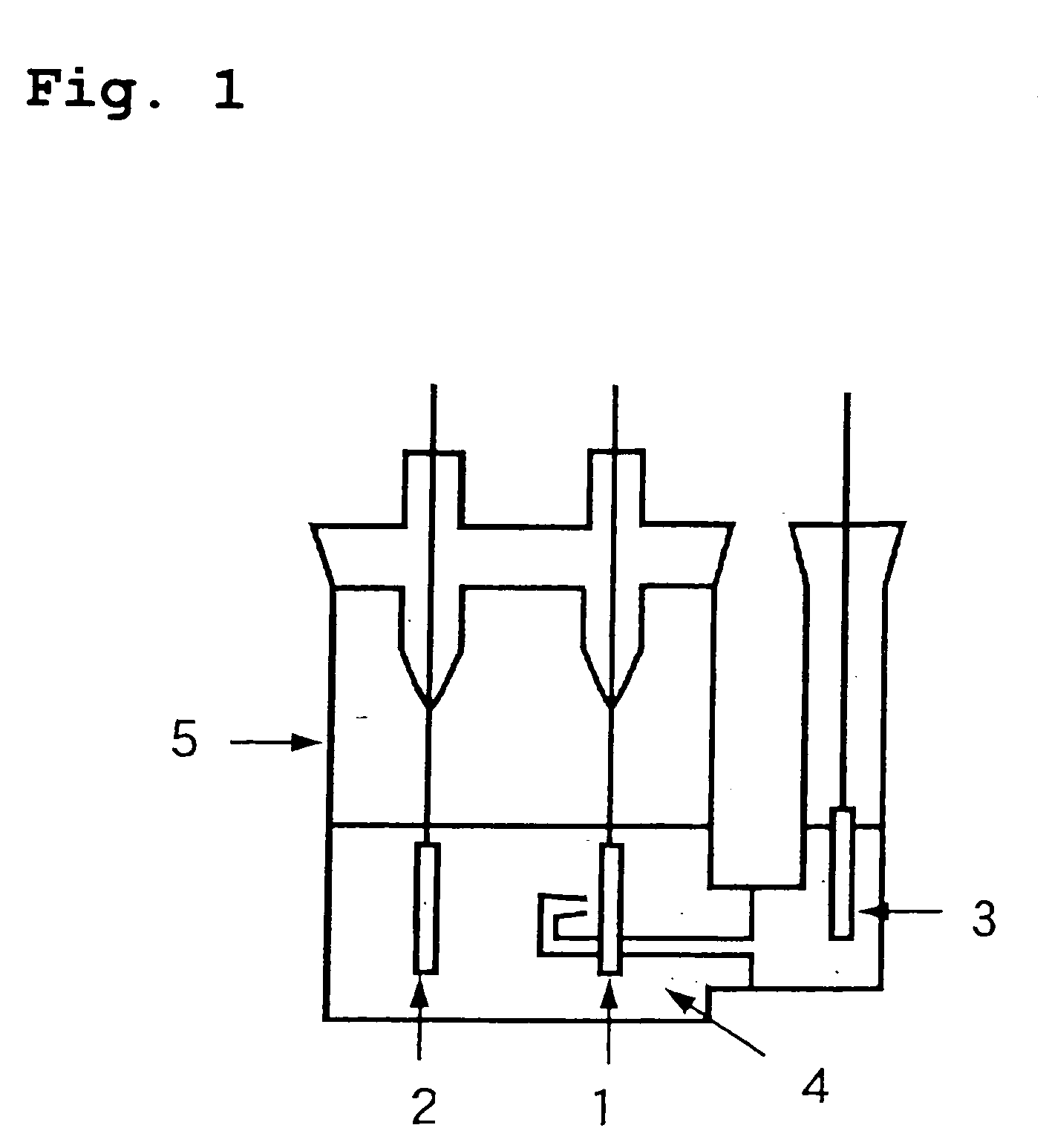Positive electrode for lithium secondary battery and lithium secondary battery
a lithium secondary battery and positive electrode technology, which is applied in the manufacture process of electrodes, cell components, foundation engineering, etc., can solve the problems of reducing the voltage of the battery, increasing the resistance overvoltage and activating voltage, and not adhering to the olivine structure of the lithium-containing phosphate, etc., to achieve the effect of increasing the amount of coating of an active material, improving the energy density per volume and rate characteristics
- Summary
- Abstract
- Description
- Claims
- Application Information
AI Technical Summary
Benefits of technology
Problems solved by technology
Method used
Image
Examples
experiment 1
[0050] (Experiment 1)
[0051] [Preparation of Positive Electrode]
[0052] LiFePO.sub.4 was prepared as follows. Starting materials of Fe.sub.3(PO.sub.4).sub.2.8H.sub.2O and Li.sub.3(PO.sub.4).sub.3 were mixed at a molar ratio of 1:1. The mixture and stainless balls having a diameter of 1 cm were inserted in a stainless pot having a diameter of 10 cm and milled under the conditions described below.
2 Revolution radius: 30 cm Number of revolutions: 150 rpm Number of autorotations: 150 rpm Operating hours: 12 hours
[0053] The mixture was sintered in an electric furnace at 600.degree. C. for 10 hours in a non-oxidizing atmosphere to obtain LiFePO.sub.4 powder. The obtained powder was confirmed by X-ray diffraction analysis to have an olivine type crystalline structure.
[0054] 80 parts by weight of the LiFePO.sub.4 powder and 10 parts by weight of artificial graphite powder as the conductive agent were mixed with 5 weight % of N-methylpyrrolidone solution containing 10 parts by weight of polyfl...
experiment 2
[0056] (Experiment 2)
[0057] Three positive electrodes a2 having different applied capacities were prepared in the same manner as Experiment 1 except that an aluminum foil without an abrasive blasting treatment (a surface roughness (Ra) of 0.026 .mu.m, a peak height (Rmax) of 0.59 .mu.m and a thickness of 15 .mu.m) was used.
[0058] A press rolling treatment with a slit breadth of rollers of 170 .mu.m (an applied capacity of 1.0 mAh / cm.sup.2) and 190 .mu.m (an applied capacity of 1.6 mAh / cm.sup.2) were applied. No press rolling treatment for a coated current collector having an applied capacity of 2.1 mAh / cm.sup.2 was done because the mixed layer came off from the current collector before the treatment.
experiment 3
[0059] (Experiment 3)
[0060] Three positive electrodes b1 having different applied capacities were prepared in the same manner as Experiment 1 except that LiCoO.sub.2 was used as an active material and the slit breadth of rollers was 130 .mu.m (for all three positive electrodes b1).
[0061] LiCoO.sub.2 was prepared as follows. Li.sub.2CO.sub.3 and CoCO.sub.3 were weighed such that an atomic ratio of Li and Co atoms, Li:Co, was adjusted to 1:1 and were mixed in a mortar. The mixture was pressed in a mold having a diameter of 17 mm, and was sintered at 800.degree. C. for 24 hours in air to obtain a sintered LiCoO.sub.2. The sintered LiCoO.sub.2 was ground in a mortar to particles having a mean diameter of 20 .mu.m.
PUM
| Property | Measurement | Unit |
|---|---|---|
| Ra | aaaaa | aaaaa |
| density | aaaaa | aaaaa |
| height | aaaaa | aaaaa |
Abstract
Description
Claims
Application Information
 Login to View More
Login to View More - R&D
- Intellectual Property
- Life Sciences
- Materials
- Tech Scout
- Unparalleled Data Quality
- Higher Quality Content
- 60% Fewer Hallucinations
Browse by: Latest US Patents, China's latest patents, Technical Efficacy Thesaurus, Application Domain, Technology Topic, Popular Technical Reports.
© 2025 PatSnap. All rights reserved.Legal|Privacy policy|Modern Slavery Act Transparency Statement|Sitemap|About US| Contact US: help@patsnap.com


